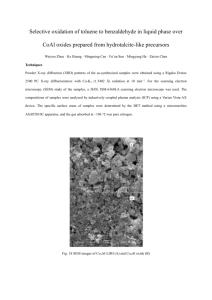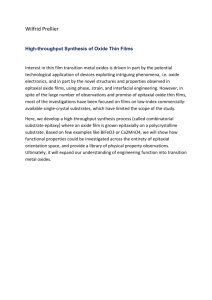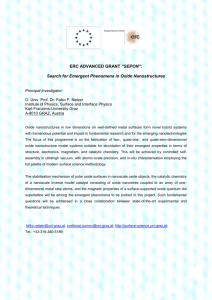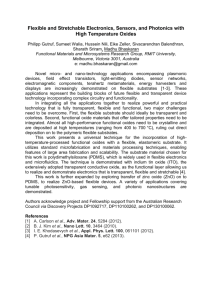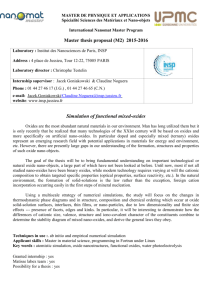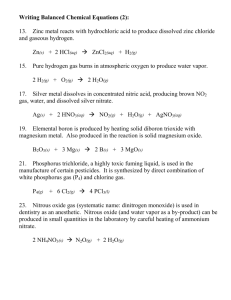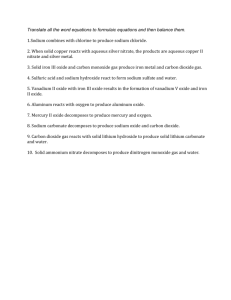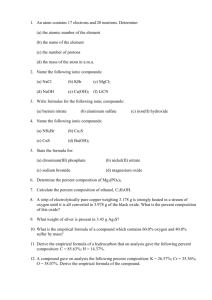To show the dependence of oxide thickness on the evolution of MOS
advertisement
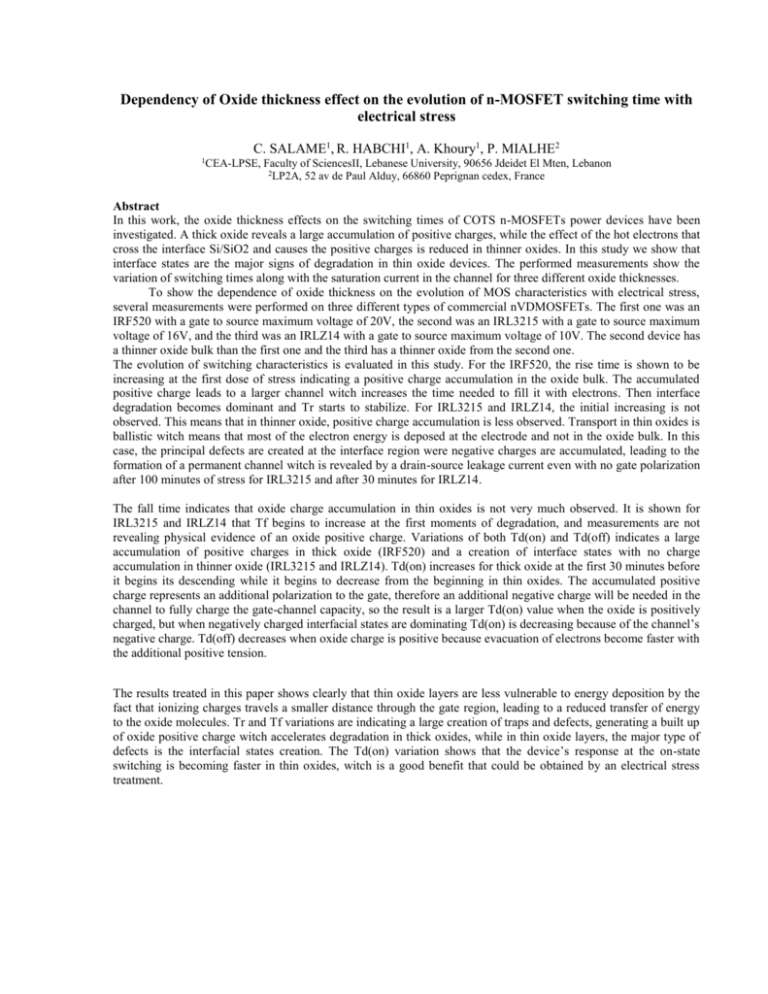
Dependency of Oxide thickness effect on the evolution of n-MOSFET switching time with electrical stress C. SALAME1, R. HABCHI1, A. Khoury1, P. MIALHE2 1CEA-LPSE, Faculty of SciencesII, Lebanese University, 90656 Jdeidet El Mten, Lebanon 2LP2A, 52 av de Paul Alduy, 66860 Peprignan cedex, France Abstract In this work, the oxide thickness effects on the switching times of COTS n-MOSFETs power devices have been investigated. A thick oxide reveals a large accumulation of positive charges, while the effect of the hot electrons that cross the interface Si/SiO2 and causes the positive charges is reduced in thinner oxides. In this study we show that interface states are the major signs of degradation in thin oxide devices. The performed measurements show the variation of switching times along with the saturation current in the channel for three different oxide thicknesses. To show the dependence of oxide thickness on the evolution of MOS characteristics with electrical stress, several measurements were performed on three different types of commercial nVDMOSFETs. The first one was an IRF520 with a gate to source maximum voltage of 20V, the second was an IRL3215 with a gate to source maximum voltage of 16V, and the third was an IRLZ14 with a gate to source maximum voltage of 10V. The second device has a thinner oxide bulk than the first one and the third has a thinner oxide from the second one. The evolution of switching characteristics is evaluated in this study. For the IRF520, the rise time is shown to be increasing at the first dose of stress indicating a positive charge accumulation in the oxide bulk. The accumulated positive charge leads to a larger channel witch increases the time needed to fill it with electrons. Then interface degradation becomes dominant and Tr starts to stabilize. For IRL3215 and IRLZ14, the initial increasing is not observed. This means that in thinner oxide, positive charge accumulation is less observed. Transport in thin oxides is ballistic witch means that most of the electron energy is deposed at the electrode and not in the oxide bulk. In this case, the principal defects are created at the interface region were negative charges are accumulated, leading to the formation of a permanent channel witch is revealed by a drain-source leakage current even with no gate polarization after 100 minutes of stress for IRL3215 and after 30 minutes for IRLZ14. The fall time indicates that oxide charge accumulation in thin oxides is not very much observed. It is shown for IRL3215 and IRLZ14 that Tf begins to increase at the first moments of degradation, and measurements are not revealing physical evidence of an oxide positive charge. Variations of both Td(on) and Td(off) indicates a large accumulation of positive charges in thick oxide (IRF520) and a creation of interface states with no charge accumulation in thinner oxide (IRL3215 and IRLZ14). Td(on) increases for thick oxide at the first 30 minutes before it begins its descending while it begins to decrease from the beginning in thin oxides. The accumulated positive charge represents an additional polarization to the gate, therefore an additional negative charge will be needed in the channel to fully charge the gate-channel capacity, so the result is a larger Td(on) value when the oxide is positively charged, but when negatively charged interfacial states are dominating Td(on) is decreasing because of the channel’s negative charge. Td(off) decreases when oxide charge is positive because evacuation of electrons become faster with the additional positive tension. The results treated in this paper shows clearly that thin oxide layers are less vulnerable to energy deposition by the fact that ionizing charges travels a smaller distance through the gate region, leading to a reduced transfer of energy to the oxide molecules. Tr and Tf variations are indicating a large creation of traps and defects, generating a built up of oxide positive charge witch accelerates degradation in thick oxides, while in thin oxide layers, the major type of defects is the interfacial states creation. The Td(on) variation shows that the device’s response at the on-state switching is becoming faster in thin oxides, witch is a good benefit that could be obtained by an electrical stress treatment.
